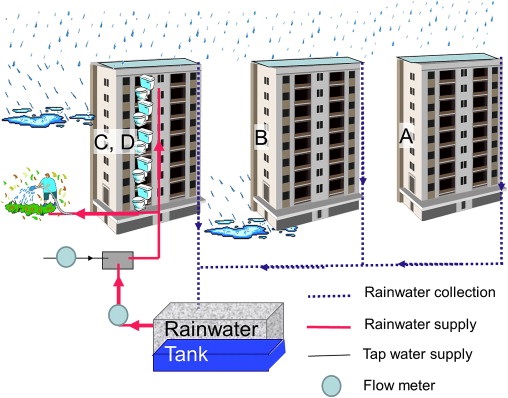
As urban areas in India continue to grow, water scarcity has become an increasingly pressing issue, especially in densely populated cities. The depletion of groundwater levels and over-reliance on municipal water supplies are contributing to the crisis. One practical solution to alleviate this problem, especially for apartment dwellers, is setting up DIY rainwater harvesting systems. These systems are cost-effective, environmentally friendly, and can make a significant difference in managing water resources in urban spaces.
What is DIY Rainwater Harvesting?
Rainwater harvesting involves capturing and storing rainwater for future use. In a DIY (Do-It-Yourself) setup, individuals or communities design and implement their own systems to collect, filter, and store rainwater from their rooftops or other surfaces. The water can then be used for non-potable purposes, such as gardening, cleaning, and even for drinking after adequate treatment.
Why DIY Systems are Ideal for Indian Apartments
Apartments in India often face limited access to water due to various challenges, such as over-extraction from local water bodies, poor infrastructure, and erratic rainfall patterns. A DIY rainwater harvesting system can provide a local, sustainable water source, reduce reliance on municipal supplies, and help manage water more efficiently within apartment complexes.
Additionally, DIY systems are customizable, allowing apartment residents to tailor them according to available space, budget, and needs. These systems are typically more affordable compared to professionally installed solutions, making them accessible to a wider range of people.
Components of a DIY Rainwater Harvesting System
Setting up a DIY rainwater harvesting system for an apartment generally involves a few basic components:
Catchment Area: This is usually the roof of the apartment building. The roof should be clean and sloped to allow water to flow toward the collection system.
Gutters and Downpipes: These channels collect the rainwater from the roof and direct it into the storage system. Ensure that the gutters are free from debris to avoid contamination.
First-Flush Diverter: This device diverts the initial flow of rainwater, which is often contaminated with dust and debris from the roof, away from the storage tank.
Filtration System: Once the water passes through the first-flush diverter, it should be filtered to remove any remaining impurities. Simple filters like mesh screens, sand, and charcoal can be used.
Storage Tank: The filtered rainwater is stored in a tank, typically made of plastic, concrete, or metal. The size of the tank depends on the available space and the average rainfall in the area.
Step-by-Step Guide to Setting Up a DIY System
Assess the Roof Space: Measure the area of your roof that will be used for rainwater collection. A larger surface area can capture more rainwater.
Install Gutters and Downpipes: Attach gutters around the roof perimeter and ensure they slope toward the downpipes. The downpipes should be wide enough to carry the water efficiently.
Set Up a First-Flush Diverter: Install the diverter to ensure only clean water enters the storage tank after the first flush.
Choose the Right Filter: Place filters to remove larger debris and fine particles. A mesh filter followed by a sand filter is a good combination.
Install a Storage Tank: Based on the available space, install a tank at a height for gravity-based water flow. Ensure the tank is covered to prevent contamination and mosquito breeding.
Connect Piping for Distribution: Run pipes from the tank to your intended usage areas. If you plan to use the water for drinking, you will need a more advanced filtration system.
Conclusion
DIY rainwater harvesting systems offer a simple, cost-effective way for apartment residents in India to manage their water needs. By harnessing rainwater, individuals can reduce dependency on municipal water supply, promote sustainable practices, and ensure a more consistent water supply. With minimal investment and some effort, rainwater harvesting can be a game-changer in urban water management.


